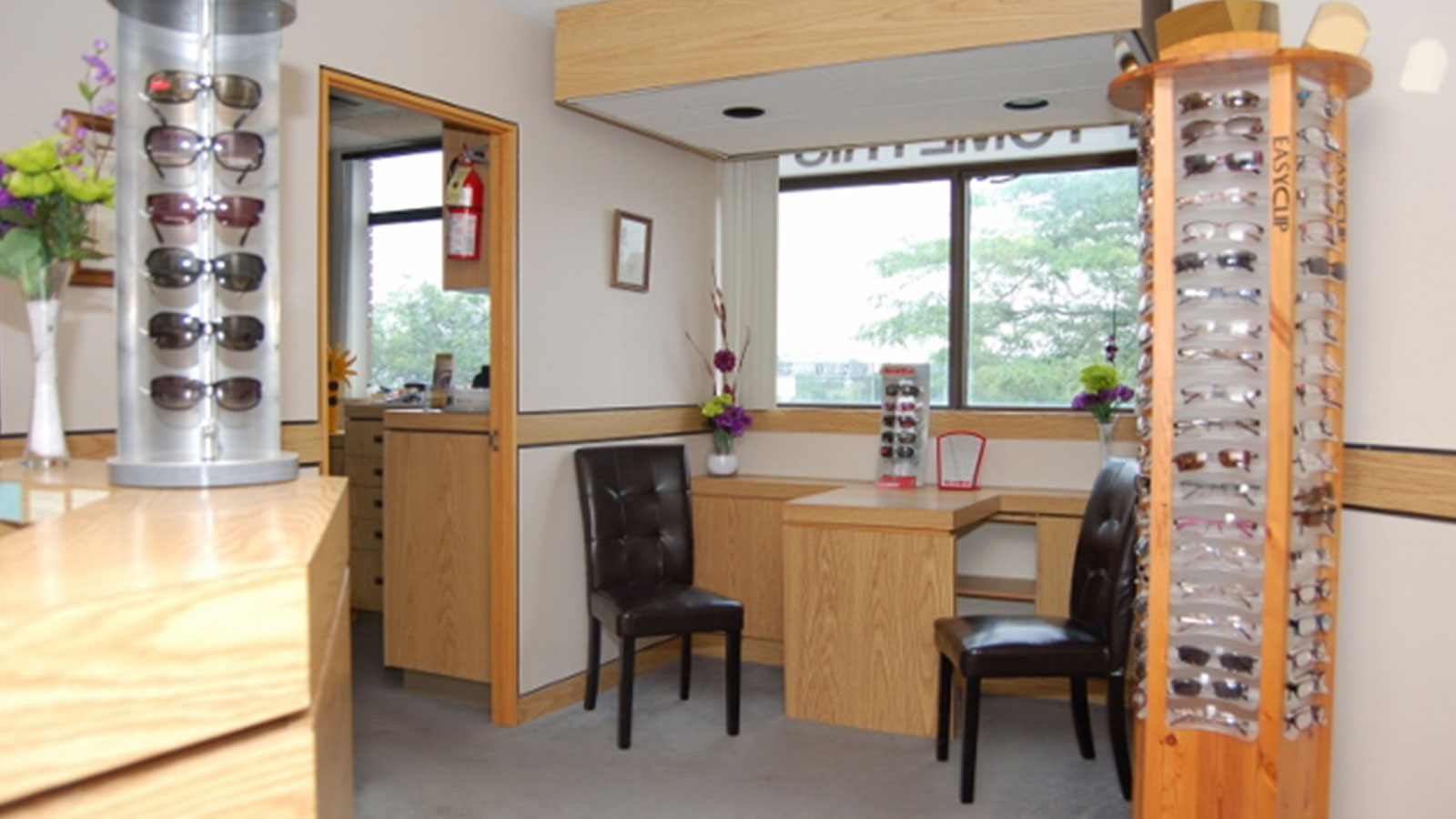
A Smooth Succession
Dr. Albert De Vries, City View Optometry
Never too Early for Succession Planning
After graduating from the University of Waterloo School of Optometry in 1981, Dr. Albert De Vries, OD, set up his clinic in Ottawa, Ontario. The office expanded in 1991 into a two-OD clinic with four staff members. Equipped with modern technology and the Optosys EMR system, City View Optometry continues to prevail in eye care services.
Dr. De Vries is not one to leave things to the last minute. After attending continuing education courses offered by the Ontario Association of Optometrists 10 years ago, he understood the importance of succession planning. Although not in a rush to retire at that time, he put the wheels in motion.
Dr. Patrick Ladage, an OD at another clinic, reached out with interest to Dr. De Vries about the sale of his clinic before he even considered selling it. This started the pair’s relationship that would eventually turn into an associateship.
“As we gained trust, we spoke about how we enjoyed practicing and what some of our goals were. Just based on how the conversations were going, we thought there might be something there for the future,” says Dr. De Vries.
“In 2012, we started to work out the value of the practice and the potential share purchase and sale agreement. We even agreed on a price. We decided to try an associate arrangement based on the knowledge that we kind of had an agreement on how it may look if it worked out. Let’s see if we can practice together first. We practiced for a year, starting in September 2013, when we entered into an associate type of arrangement. By the end of 2014, everything was in place to exercise the next step of our seven-year journey,” explains Dr. De Vries.
The end of the seven-year journey will be complete this year. Up until now, the duo has been 50/50 partners in the practice. At the end of this year, Dr. Ladage will purchase the remaining professional corporation, and Dr. De Vries will carry on as an associate.
“The chemistry seemed right,” says Dr. De Vries about the partnership. “You recognize that there is chemistry, and you connect. The way that he practiced and the way that I practiced, although not identical, were a lot similar. I felt good knowing that he would be the one to care for the practice when I would be gone. That proved to be the case when we had our associateship. The sale went through because of that.”

Putting Plans into Action
When the time came to choose the right expert to arrange for the sale, Dr. De Vries researched tirelessly and saved many conversations he had with accountants, lawyers, friends, and colleagues through the years to ensure nothing would be missed.
“I had already secured a good accountant years before. This industry is not about competing with other optometrists; it’s about a common purpose and a real joy in the profession. That said, my first accountant was someone that a colleague recommended through networking. Even my lawyer was also recommended by another optometrist. That’s how I selected my experts,” enthuses Dr. De Vries.
Dr. De Vries drew up his own associates’ agreement based on conversations with his network of optometrists. “When I finished that agreement, I tried to save money by coming up with my own share purchase agreement and then a shareholders’ agreement. But that started to get a bit much for me. That’s when I decided to pay a lawyer to write those agreements,” he discloses.
Through various continuing education programs, Dr. De Vries was already knowledgeable about the different methods for evaluating a practice, such as the asset approach, the market approach, and the income approach.
“I ended up getting a professional to do an evaluation, and I also had my accountant perform the same evaluation. This way, I had an accounting and an optometrist point of view. In the end, I blended them together using a weighted average of these different types of approaches. I arrived at a number and then reflected that onto Dr. Ladage,” notes Dr. De Vries.
“When you’re asking for an evaluation, you may be asked if you are the seller or the buyer,” says Dr. De Vries. “If you are the seller, they may have reason to offer a higher price, and if you’re the buyer, they may want to get that price a little lower. I discussed this with Dr. Ladage, and he did his own analysis. In the end, we came up with a number that was somewhere in-between. It takes work, but you must aim to arrive at a fair price in the end.”
A single thread that runs through succession planning is the amount of planning required to allow for the ideal execution. “It’s been a real gradual change to get where we are now from when we started. Slowly, you give more responsibilities to the partner who is going to own the practice. For example, my wife did payroll and bookkeeping, and then slowly Dr. Ladage’s wife took over the payroll. We divided up the tasks,” says Dr. De Vries. “What also happens when you take over these tasks is that naturally, you get more involved with the staff. It’s just been a very gradual change”
Dr. De Vries encourages ODs thinking of retiring to avoid a “coast to the end” mantra. In fact, he recommends the exact opposite. Stay ahead. Stay relevant. Keep current. “One of the things I did a couple of years before Dr. Ladage joined me was to invest in taking retinal imaging. I was hanging on for a while, hoping that the equipment would improve. In 2009, I purchased a retinal imaging device that made our clinic a little more profitable and allowed us to do our job better. When he joined us a couple of years later, Dr. Ladage knew that things were up to date. Then in 2015, as partners, we purchased an OCT to enhance our diagnostic capabilities. Recently, at the suggestion of Dr. Ladage, we purchased a device that allows us to perform enhanced tear evaluation and meibograhy. The closer he got to taking over completely, the more decisions he started to make,” says Dr. De Vries.
Announcing the partnership to the staff went very well. Dr. De Vries brought on Dr. Ladage with the narrative that if all went well in the associateship, he would eventually become their boss. “That is a testament to my staff’s ability to adapt. We are very thankful to our staff and have always tried to maintain a good relationship,” explains Dr. De Vries.
Dr. De Vries underscores the importance of not waiting until the last minute to execute your succession plan: “Even if it seems early, just try to give it some consideration. If you leave things to the last minute, there may be a temptation as you age to try to coast to the end, but that would be inadvisable. Do a year of associateship first to ensure the partnership will work. If you want to ensure the new OD cares for your patients, take the time to observe him/her. I would also advise to maintain your practice, invest in equipment and stay current.”
He concludes by saying the power of networking with colleagues will pay dividends throughout your career.